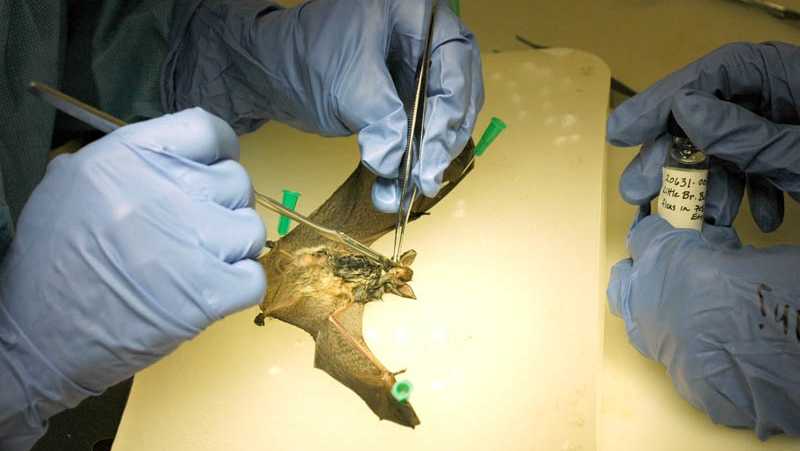CONCORD, N.H. —New surveys of the bat population in New Hampshire show that they have been devastated by white-nose syndrome.
Fish and Game Department officials said biologists found only 26 bats in hibernacula, places where bats spend the winter. In 2008, the same hibernacula had nearly 4,000 bats.
The news was worse for little brown bats, which have been hit the hardest by white-nose syndrome. Researchers counted 3,135 little brown bats in 2008, but they only found one in 2018. Little brown bats used to be the most numerous bats in the Northeast, officials said.
White-nose syndrome is a fungus that damages the skin, muscles and blood vessels of bats. It was first discovered in 2006 in New York and has since killed millions of bats. There is no treatment for the fungus.
“I did not have a great deal of hope to see increasing numbers of hibernating bats during the 2018 surveys, but the continued lack of recovery remains disconcerting and of great concern,” said Dr. Jacques Veilleux, professor of biology and environmental science at Franklin Pierce University. “I do retain hope for the future return of our hibernating bats in New Hampshire, but should the recovery happen, it is likely to take many decades.”
Officials said bats generally only have one pup per year, so it could take decades for populations to rebound if they ever do.
Even though only one little brown bat was found this year, it doesn’t mean they are gone from the state, officials said. Some bats fly to hibernacula in Vermont and New York and spend the summer in New Hampshire.
There are also bat colonies in homes and barns in New Hampshire that are tracked by homeowners. Wildlife officials said homeowners can conduct their own surveys by counting the number of bats that leave the colonies at dusk. Forms and instructions for conducting a survey can be found on the Fish and Game website.

